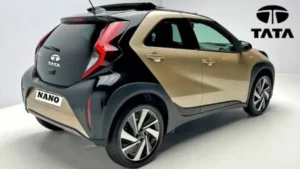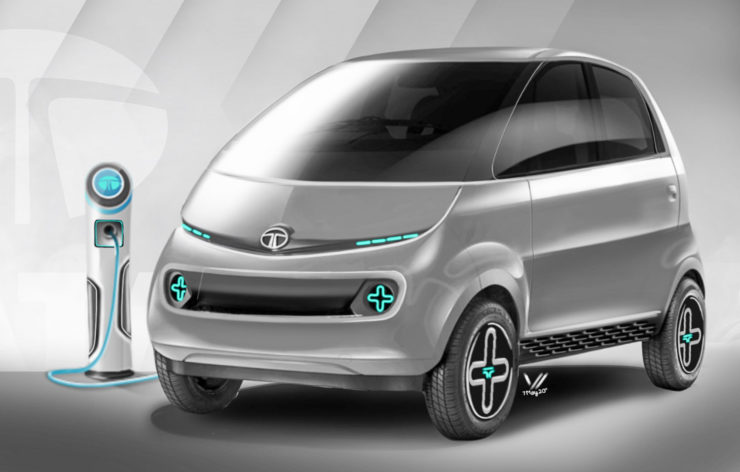Tata Nano 2024
The Tata Nano, once hailed as the “world’s cheapest car,” captured global attention when it was launched in 2008. It was a revolutionary idea—a car affordable for the common Indian household. However, despite its innovation, Tata Nano failed to meet its sales expectations and was discontinued in 2018. Yet, rumors of a potential relaunch have generated buzz, especially with whispers of a Tata Nano 2024 model making waves.
In this article, we will explore the possibility of Tata Nano’s comeback, its past success and failure, and what to expect from a possible 2024 version. We’ll also discuss the modern features, price range, and mileage predictions of the Tata Nano 2024.
The End of an Era: Tata Nano GenX Discontinuation

Tata Motors stopped producing the Nano in 2018 after sales declined drastically. The GenX version, the final iteration of the Nano, was priced around Rs. 2.47 lakh at the time of its discontinuation. Despite initial optimism, the Nano couldn’t meet its target of being the “People’s Car” due to several factors, from branding missteps to safety concerns and consumer perceptions about its low price equating to lower quality.
The Sanand plant, which was set up to manufacture the Nano, is now used to produce other popular Tata models like the Tigor and Tiago. However, Tata Motors hasn’t given up entirely on the idea of the Nano. Reports indicate that Tata might be planning to relaunch the car as an affordable electric vehicle (EV). Could Tata Nano 2024 be the return of this iconic car? Let’s take a look.
Features of Tata Nano 2024: What’s New?
Although Tata Nano’s official relaunch is yet to be confirmed, automotive insiders have speculated about the possible modern features this compact car might bring in 2024. If the Tata Nano does make a comeback, it would likely boast several updates to meet the current demands of the Indian car market.
- Digital Instrument Cluster: A user-friendly dashboard with a modern digital display for essential driving information.
- LED Headlights and Indicators: The latest in headlight technology, with brighter, more efficient LED lights.
- USB and Charging Ports: Multiple USB and charging ports for driver and passenger convenience.
- Cruise Control and Climate Control: Advanced features for a budget car, ensuring a smoother and more comfortable driving experience.
- Android Auto and Apple CarPlay: Connectivity is a must in modern cars, and the 2024 Nano could offer seamless smartphone integration.
- Comfortable Interiors: More ergonomic seats and refined materials would likely enhance the cabin’s feel, offering better comfort for longer drives.
In addition to these features, the 2024 Nano would likely have better safety features than its predecessors, including airbags and ABS (Anti-lock Braking System), keeping in line with modern regulations.
Engine and Mileage: Powering the Tata Nano 2024
The original Tata Nano had a modest 624cc engine with a 5-speed manual gearbox, producing decent power for city commuting. If the Nano were to be relaunched as a 2024 model, the car could continue to offer an engine similar in capacity, but with updates for greater efficiency and power.
Speculation suggests that the new Nano might offer a mileage of 30 to 35 kilometers per liter, making it one of the most fuel-efficient cars in its class. Considering the rising fuel prices, high mileage remains a strong selling point for budget-conscious consumers.
Tata may also opt for an electric version of the Nano, further enhancing its appeal. Given the growing demand for eco-friendly vehicles in India, an electric Tata Nano could be priced affordably to attract a large section of the population. Such a model would have a limited driving range (approximately 150-200 kilometers per charge), making it ideal for urban use.
Price of Tata Nano 2024
If the Tata Nano 2024 follows the same value-driven philosophy, it will likely be priced between Rs. 2 lakh and Rs. 3 lakh. This would put it in direct competition with other small, budget-friendly cars like the Maruti Suzuki Alto and Renault Kwid. For an electric version, the price could be higher, likely ranging between Rs. 4 lakh and Rs. 5 lakh, given the additional cost of EV technology.
For this price, the Nano could attract first-time car buyers, students, and even environmentally conscious consumers looking for a second, city-friendly vehicle.
Tata Nano: A Brief History
The original Tata Nano’s launch was nothing short of sensational. Tata Motors aimed to provide an affordable option for Indian families, many of whom could only afford two-wheelers. However, the Nano’s marketing strategy—touted as the “world’s cheapest car”—ultimately worked against it. People were reluctant to buy a vehicle labeled as “cheap,” associating the low price with low quality.
Moreover, the lack of key safety features, rising competition, and increased regulatory scrutiny hurt sales. Despite Tata Motors’ efforts to introduce updates like the Nano Twist and Nano GenX with added features, the sales never really picked up, and the company had to halt production in 2018.
The Potential for a Tata Nano EV

Despite its past shortcomings, the Nano brand still carries significant value. In India’s growing electric vehicle market, Tata Motors could have a golden opportunity to reintroduce the Nano as an EV, appealing to environmentally conscious consumers and city dwellers looking for affordable, zero-emission options.
Given Tata’s focus on electric vehicles with models like the Nexon EV, a Nano EV seems like a natural progression. However, it will be essential for Tata to learn from the past and reposition the Nano as an innovative, sustainable vehicle, rather than focusing solely on cost.
Lessons from the Nano’s Downfall
Tata Nano’s initial failure offers valuable lessons for both the company and the broader automotive industry. Here are some key takeaways:
- Brand Positioning Matters: Tata marketed the Nano as the cheapest car, but in doing so, they undermined the car’s potential appeal. A product’s value proposition should go beyond just price—focusing on innovation, features, and benefits is crucial.
- Customer Perception is Everything: Consumers didn’t want to be associated with a “cheap” car. The emotional aspect of buying a vehicle, as a symbol of status, was overlooked.
- Adaptability and Feedback: Introducing a prototype and gathering consumer feedback before launching the final product could have helped Tata understand the market better.
- Innovation and Safety: Modern buyers expect safety features even in budget cars. The Nano’s lack of essential safety features was a significant factor in its decline.
Conclusion
While Tata Motors hasn’t officially announced a relaunch of the Nano, the buzz surrounding a possible 2024 version suggests that there’s still interest in the iconic car. With modern features, an updated engine, and perhaps an electric variant, the Tata Nano 2024 could revive the brand’s legacy.
If Tata learns from its past mistakes and positions the Nano as a feature-rich, efficient, and affordable car, it has the potential to capture a significant share of the Indian market once again. Whether the Nano returns in petrol or electric form, it will undoubtedly attract attention for its unique place in automotive history.




